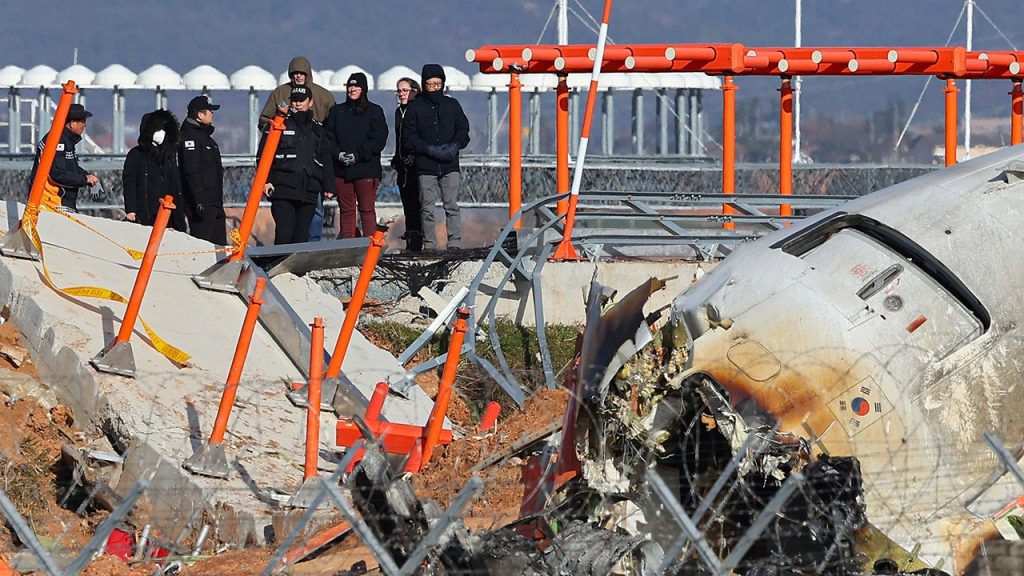The tragic crash of a Jeju Air Boeing 737-800 in South Korea has left investigators scrambling to piece together the final moments of the flight and determine the cause of the disaster. The crash, which claimed the lives of 179 of the 181 people on board, marks South Korea’s deadliest aviation accident in decades. The aircraft, after declaring an emergency, attempted a landing at Muan International Airport but tragically overshot the runway, colliding with a concrete embankment and erupting into flames. The ensuing investigation has drawn international attention, with experts from the United States, including representatives from the Federal Aviation Administration (FAA), the National Transportation Safety Board (NTSB), and Boeing, joining South Korean authorities in examining the wreckage and gathering evidence.
The investigation focuses on several key areas. Retrieval and analysis of the aircraft’s “black boxes,” containing flight data and cockpit voice recordings, are paramount. These devices are expected to provide crucial insights into the aircraft’s performance, pilot actions, and any potential mechanical issues leading up to the crash. Investigators are meticulously examining the wreckage, searching for clues about the aircraft’s structural integrity and any signs of pre-existing damage. The pre-flight inspection report, which indicated “no issues,” is also under scrutiny to ensure its accuracy and completeness. Furthermore, the role of the airport’s infrastructure is being questioned, particularly the placement of the embankment the aircraft struck. Concerns were raised prior to the crash regarding the embankment’s proximity to the runway, suggesting a potential hazard that may have contributed to the severity of the accident.
The pilot’s decision to attempt a landing after declaring an emergency is a central question in the investigation. Understanding the nature of the emergency and the factors influencing the pilot’s actions is crucial. Investigators will analyze air traffic control communications, weather conditions, and the pilot’s experience and training to determine if appropriate procedures were followed. The possibility of a bird strike, a known aviation hazard, is also being explored. While a bird strike can cause engine failure, modern aircraft are designed with redundant systems to mitigate this risk. The aircraft’s high speed and altitude during the approach are also points of concern, prompting investigators to explore why the plane was in this state during its landing attempt.
The South Korean government has initiated comprehensive safety inspections of all 101 Boeing 737-800s operating in the country. This proactive measure aims to identify any potential systemic issues related to maintenance, operation, or pilot training. The inspections involve a thorough review of maintenance records, operational procedures, and pilot qualifications to ensure compliance with safety regulations. The findings of these inspections will be crucial in informing future safety protocols and preventing similar accidents.
While the investigation is still in its early stages, preliminary observations raise several important questions. The embankment’s location, the aircraft’s high approach speed and altitude, and the pilot’s decision-making process are all under intense scrutiny. The investigation will likely take several months to complete, involving detailed analysis of the wreckage, flight data, cockpit voice recordings, witness testimonies, and airport infrastructure. The goal is to determine the root cause of the accident and make recommendations to prevent similar tragedies in the future.
The Jeju Air crash underscores the complexity of aviation accidents and the importance of thorough investigation. By meticulously examining all available evidence, investigators hope to provide answers to the grieving families and the public, while also contributing to enhanced aviation safety standards worldwide. The lessons learned from this tragedy will be vital in shaping future safety protocols and ensuring safer skies for all.

